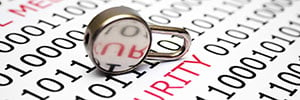Are Negative Interest Rates A Real Risk for Savers?
There has been a lot of talk lately about negative interest rates. This year was suppose to be the year when rates were going back to a more normal level. However, the global economic turmoil and the stock market volatility have started to change expectations.
Even though the Fed hasn’t changed plans, it appears likely that their "gradual" rate hikes this year will be more gradual. If the economy starts to tank, we’ll then have to worry about the Fed undoing its last rate hike. In addition, there’s the possibility the Fed may try something that’s being done by a few other central banks: cut rates below zero.
The latest central bank to set negative rates is Japan. At the end of January, the Bank of Japan cut the rate on excess reserves to negative 0.1%. This means that financial institutions will have to pay the Bank of Japan for the privilege of parking reserves that exceed those required by regulators. The Bank of Japan joins several European central banks in setting a negative rate. These include the European Central Bank (ECB) and central banks in Denmark, Switzerland and Sweden.
With this news of the Bank of Japan and with Fed Chair Janet Yellen telling Congressman at last week’s hearings that the Fed is "taking a look" at negative interest rates, the possibility of negative rates hitting the U.S. seems to be real. It should be noted that a lot of things need to happen for us to see negative rates, and that would not happen quickly. First, the economy would need to nosedive. If the U.S. economy heads back into recession, the Fed would first consider undoing its December rate hike. Only then would it even consider negative rates, and that’s only if there’s agreement at the Fed to add this to their "tool box."
If the U.S. economy takes a very bad turn for the worse and the Fed thinks it needs to do more than just go back to its zero interest rate policy (ZIRP) and quantitative easing (QE), it’s possible that the Fed could try negative interest rates. The experiences of Europe and Japan could ease the concerns at the Fed. Hopefully, the U.S. economy won’t take a turn for the worse, and hopefully, the Fed will decide negative rates aren’t worth the risks. I don’t see any chance that we’ll see negative rates in the next year, but there is some possibility that it could happen years down the road.
What would we see if the Fed decides to set interest rates negative? We can learn a little about what to expect based on what happened in Europe. First, individuals in Europe are not being charged negative interest on their bank deposits.
Negative rates would first hurt the banks. Based on what we’ve seen in Europe, it would be unlikely for banks to pass along negative rates to their deposit customers. That’s at least in the early stages of the negative interest rate experiment. However, since negative rates would be hurting the banks, the banks would be forced to be less saver friendly. That means deposit rates closer to zero and more bank fees. Banks may add requirements for opening savings accounts and CDs. Checking requirements and other relationship requirements may become more prevalent.
If the Fed goes down the road of negative interest rates and it thinks that it’s helping the economy, savers could be in trouble. In that scenario, the Fed may be willing to keep cutting rates deeper into negative territory. Banks may be more likely to charge negative interest rates on personal deposit accounts. People will probably keep more cash at home to avoid being hit by the negative interest rates. People may try to prepay as many of their bills they can. The utilities and companies would likely put in place new policies to limit people from prepaying too early.
How would the IRS treat negative interest rates on deposits? I haven’t seen IRS disclose a policy on negative interest rates, but the Danish government has been looking into this issue. It concluded that interest expenses (caused by negative interest) would be tax-deductible for bank depositors and interest income would be taxable for borrowers.
The one certainty of negative interest rates is that savers will be punished even more than what we’ve seen with zero rates. But it’s way too early to worry about negative interest rates. Even if the U.S. economy goes into a recession, it’s far from certain that the Fed will go down that road of negative interest rates.
 What Is Bank Fraud? How to Recognize It, Avoid It and Report It
What Is Bank Fraud? How to Recognize It, Avoid It and Report It How to Open a Bank Account for a Minor
How to Open a Bank Account for a Minor How to Balance a Checkbook
How to Balance a Checkbook Retirement Savings: How Much Should I Save Each Month?
Retirement Savings: How Much Should I Save Each Month?